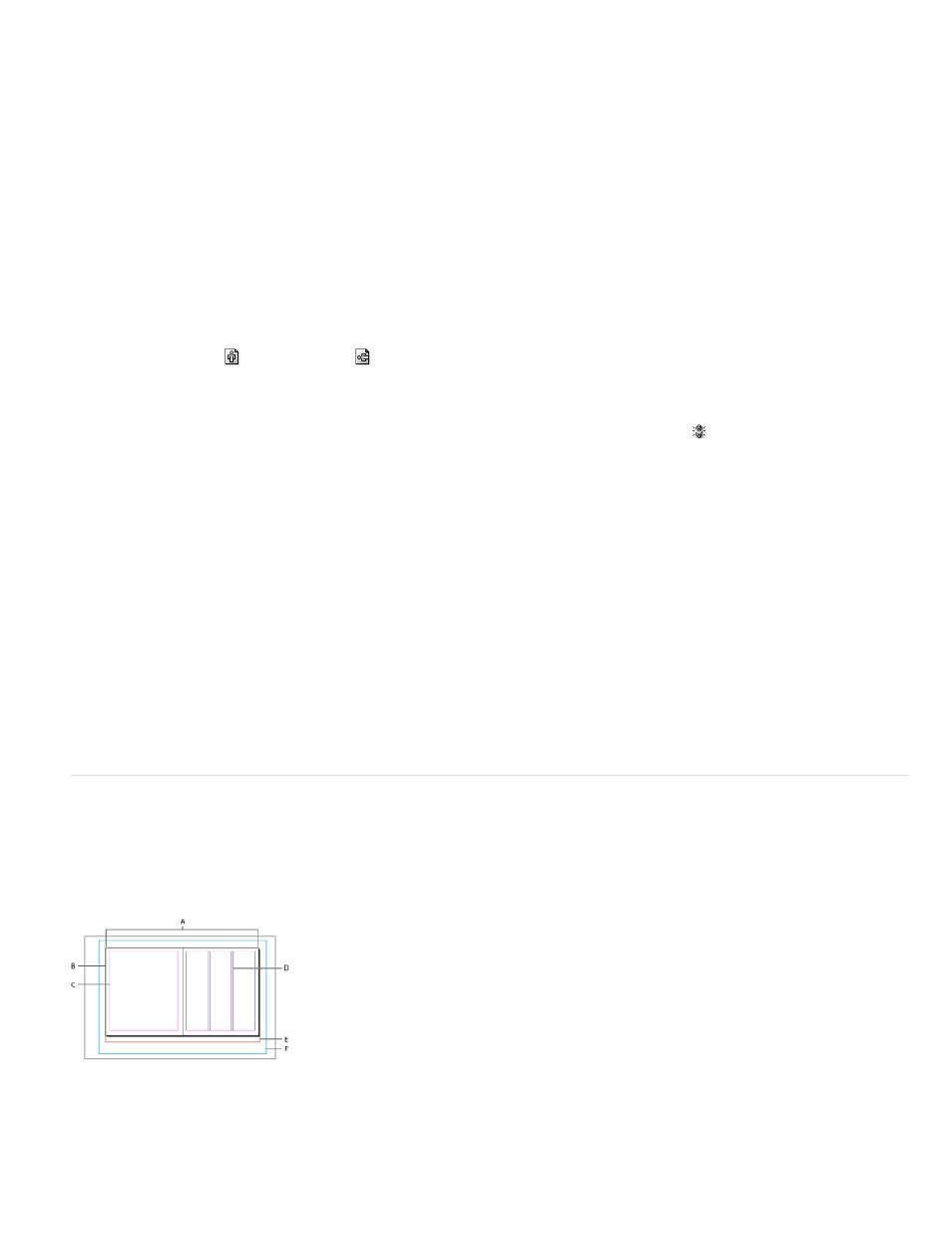Document window overview – Adobe InDesign User Manual
Page 59

Facing Pages
Master Text Frame
Primary Text Frame
Page Size
Orientation
Bleed
Slug
Preview
Note:
Select this option to make left and right pages face each other in a double-page spread, such as for books and magazines.
Deselect this option to let each page stand alone, such as when you’re printing flyers or posters or when you want objects to bleed in the binding.
After you’ve created a document, you can use the Pages panel to create spreads with more than two pages or force the first two pages to open as
a spread. (See
CS5.5 and earlier: Select this option to create a text frame the size of the area within the margin guides, matching the column
settings you specified. The master text frame is added to the A Master. (See
.)
The Master Text Frame option is available only when you’ve chosen File > New > Document.
CS6 and later: select this option to add a primary text frame on the master page. When you apply a new master page, the
story in the primary text frame automatically flows into the primary text frame of the new master page.
Choose a page size from the menu, or type values for Width and Height. Page size represents the final size you want after bleeds or
other marks outside the page are trimmed.
Click Portrait
(tall) or Landscape
(wide). These icons interact dynamically with the dimensions you enter in Page Size. When
Height is the larger value, the portrait icon is selected. When Width is the larger value, the landscape icon is selected. Clicking the deselected icon
switches the Height and Width values.
Tip: To specify the dimensions of the bleed and slug areas, click the Arrow button before the Bleed and Slug label in the New Document dialog
box. To make the bleed or slug areas extend evenly on all sides, click the Make All Settings The Same icon
.
The Bleed area allows you to print objects that are arranged at the outer edge of the defined page size. For a page of the required
dimensions, if an object is positioned at its edge, some white may appear at the edge of the printed area due to slight misalignment during printing
or trimming. For this reason, you should position an object that is at the edge of the page of the required dimensions a little beyond the edge, and
trim after printing. Bleed area is shown by a red line on the document. You can set bleed area settings from Bleed in the Print dialog box.
The slug area is discarded when the document is trimmed to its final page size. The slug area holds printing information, customized color
bar information, or displays other instructions and descriptions for other information in the document. Objects (including text frames) positioned in
the slug area are printed but will disappear when the document is trimmed to its final page size.
Objects outside the bleed or slug area (whichever extends farther) do not print.
(Only in InDesign CC) Select this checkbox to see how your new document will look like. Make necessary changes to the options if the
preview is not as desired.
You can also click the Save Document Preset icon to save document settings for future use.
Document window overview
Each page or spread in your document has its own pasteboard and guides, which are visible in Normal View mode. (To switch to Normal View,
choose View > Screen Mode > Normal.) The pasteboard is replaced with a gray background when the document is viewed using one of the
Preview modes. (See
You can change the color of this preview background and guides in Guides & Pasteboard preferences.
Document and guides in Normal View Mode
A. Spread (black lines) B. Page (black lines) C. Margin guides (magenta lines) D. Column guides (violet lines) E. Bleed area (red lines) F. Slug
area (blue lines)
54
